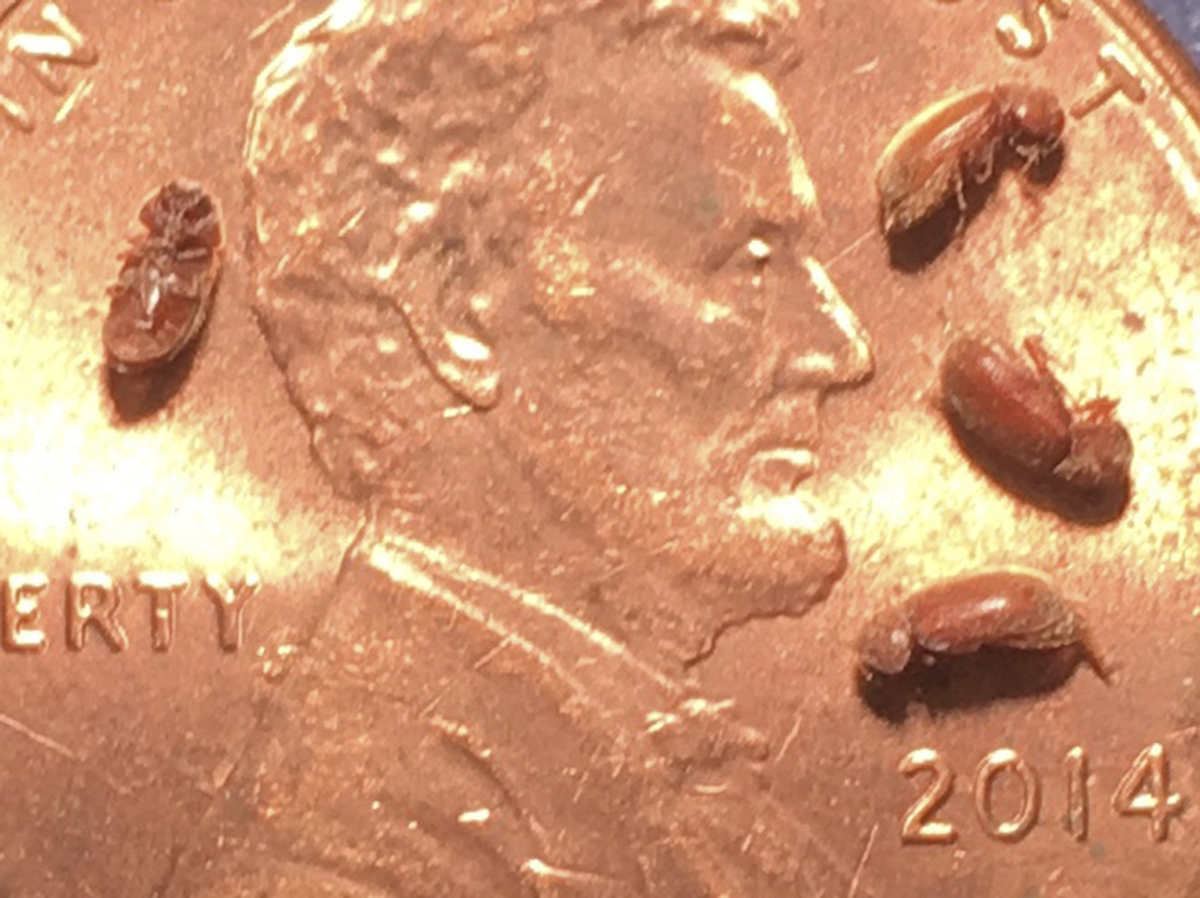
By Jody Green, PhD, Extension Educator, Lancaster Co.
While their names may imply a life of drugs and tobacco, these small beetles can feed and survive on a number of products that we all have in our homes. Entomologists call these types of beetles “stored product pests” and they feed on food or non-food items, of both plant and animal derived products.
WHAT DO THEY LOOK LIKE?
Both cigarette beetles and drugstore beetles are small, reddish-brown, oval-shaped beetles. They are approximately 1/8" long and from the top, their heads are not visible. With some magnification, fine hairs can be seen on their wing covers. Drugstore beetles have rows of pits on their wing covers and a 3-segmented antennal club. Cigarette beetles have smooth wing covers and serrated antennae. Despite these slight physical differences, their pest status is similar as both are distributed worldwide and have the ability to cause great damage and huge economic loss. They usually go unnoticed until they are found in high numbers either flying throughout the house or gathered around windows.
HOW DID THEY GET INTO MY HOME?
Adult beetles are active fliers and can get into storage facilities via gaps, open doors, unscreened windows, infested transport vehicles, bulk bins and containers. With an adequate food source and a temperature-controlled environment, insects can thrive, breed and feed. Adult beetles lay their eggs in food and their grub-like larvae hatch and damage commodities with their chewing mouthparts. In processing facilities, storage warehouses, grocery stores and home pantries, infestations can be transferred among products.
Stored product beetles like cigarette beetles and drugstore beetles cause damage by leaving their filth in the foods they infest. Beetles contaminate food by leaving insect fragments, exoskeletons and fecal matter. Though they are not harmful or medically important, insect bodies in food stuff may cause off-flavors in high enough numbers.
WHERE DO I LOOK FOR THEM?
Cigarette and drugstore beetles feed on a wide variety of products. As their name suggests cigarette beetles feed on cigars, cigarettes and chewing tobacco, and drugstore beetles feed on multivitamins and other types of pharmaceuticals. Beetles enter packaging through cracks in cardboard boxes, compromised containers and by chewing through plastic or foil packaging.
Potential food sources include flours, dry cake mixes, dried fruits, cereals, cocoa, coffee beans, nuts, herbs, spices (especially paprika and cayenne), rice, biscuits, condiments, teas and beans. As mentioned, these beetles infest things non-food (for human consumption) items such as dry dog and pet food, fish meal, rodent bait, bird and animal nests, grass seed, floral arrangements, potpourri, decorative wreaths, pinned insects, furniture stuffing, bookbinding, leather and hair.
HOW DO I STOP THEM?
Prevention and sanitation are the best protections against stored product pests. Here are some ways to prevent infestations in the home, minimize wasted food and save money:
• Before purchase, inspect food products and look for expiration dates, examine packaging for damage, webbing, holes, rips or tears.
• Avoid buying in bulk and storing large quantities of food products in the pantry.
• Place spices or dry ingredients in the freezer (32°F for 7 days kills all life stages) prior to storing in pantry or shelves.
• Store products in air-tight, transparent, glass or plastic, insect-proof containers.
• Use the oldest products first to ensure freshness and proper stock rotation.
• Sweep, vacuum or clean up spills and crumbs to prevent attracting pests.
Treatment strategies for stored product pests DO NOT include insecticide use inside the home. An integrated approach to pest management is recommended, which includes locating the sources of the infestation and eliminating contaminated products in an outdoor trash receptacle. Most people overlook prepackaged and prepared foods, unopened packages and non-food items, but a variety of products are vulnerable.